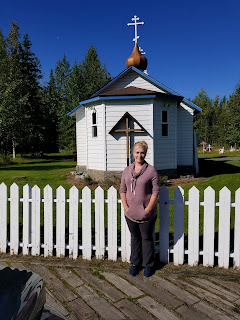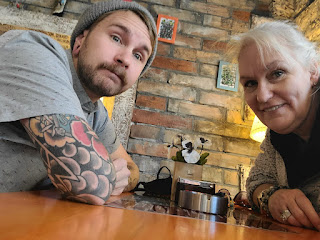Linderhof Palace
King Ludwig and Linderhof Palace
Since my first trip to Germany I have had a fascination with
King Ludwig, likely because his life and death are shrouded with such mystery.
King Ludwig II was born Ludwig Otto Friedrich Wilhelm on 25 August 1845, he was
the king of Bavaria from the age of 18 when his father unexpectedly died to his
own untimely death on 13 June 1886. King Ludwig has been called the “Mad King”,
the “Swan King” and the “Fairy Tale King” over time.
Once King Ludwig ascended the throne there was increased
pressure on him to marry and produce an heir; Ludwig was engaged to Duchess
Sophie Charlotte of Bavaria. She was his cousin and the younger sister of his
dear friend Elisabeth Empress of Austria. Ludwig originally agreed to this engagement
but as time wore on he continued to postpone the wedding date and finally ended
the engagement altogether in 1867. Ludwig never did marry and he is not tied to
any mistresses, this is probably because he was a homosexual who was forced to suppress
his sexual desires, his journals and private letters confirm that he had strong
desires towards men and throughout his reign he did have several close male
friends whom he is believed to have had relationships with.
King Ludwig is probably best known for his construction of a
series of elaborate castles. Linderhof Palace is the smallest of Ludwig’s
planned castles and the only one to be completed in his lifetime; Ludwig designed
this palace and its gardens after Versailles, the home of the Sun King Louis
XIV. Linderhof is located in the
Bavarian Alps on the site of a hunting lodge that had been owned by Ludwig’s
father. Ludwig had the hunting lodge torn down and moved to its present day
location and construction on Linderof began.
| Hunting Lodge |
My middle daughter and I took a trip to Germany for her high school graduation gift; one of the tours we took on this trip was to see Linderhof Place. This Palace is small, only 10 rooms yet each room is breathtakingly beautiful and the grounds and gardens are exquisite.
Our tour began in the vestibule where we are told that this
was King Ludwig’s favorite home and that he spent eight years here (he only
spent 11 nights at Neuschwanstein castle before being taken away and declared
insane). On the ceiling of this room the Sun Kings face looks down surrounded
by golden beams of light. From here we enter the kings West Tapestry room, in reality
there are not tapestries on the walls but instead floor to ceiling paintings as
well as the ceiling itself being painted to represent Apollo and Venus coming together.
We take a quick walk through the Yellow Cabinet a space to separate rooms with a ceiling
that depicts the four parts of the world, the four parts of the earth and the
signs of the zodiac
We then enter the Audience room that Ludwig used as an
office. A throne like chair and desk are under an impressive canopy giving the
king not only a throne but also a place to read. One must go through my daughters
favorite area next, the lilac cabinet, a small area decorated in lilac silk
that marks the way to the bedroom.
King Ludwig’s bedroom is surprisingly large given the small
size of the rest of the rooms, in the center of the room is an enormous bed all
done in blue and gold, above the bed is an impressive needlework piece that
depicts his coat of arms, a chandelier hangs in the center of the room and all
of the walls seem to be covered in gold. Outside of the bedroom we enter the
Pink Cabinet a small room that served as Ludwig’s dressing room.
We reach the dining room, an oval shaped room with carving
on the walls that show hunting, fishing and farming scenes depicting the food
that is provided at this table. The most interesting thing about this room is
the table is only made for one and if you were to go to the kitchens directly
below this room you would find a cranking mechanism that was used to lower the
table to be set with food and raise it back up, making it so King Ludwig did
not have to see his servants.
We enter the last of the four cabinets, the Blue Cabinet
before entering the East Tapestry Room where painted walls depict scenes from
Ovids Metamorphoses, this ceiling depicts Apollo and Aurora symbolizing the
morning where the West Tapestry room symbolized the evening.
Out tour ends in the Hall of Mirrors a room where every
surface seems to be covered in mirrors showing you a reflection no matter where
you look, this makes the room appear to go on indefinitely. King Ludwig slept during the day and spent
most of his waking time at night so he is said to have not used this room
during the daytime, however our tour guide points out how incredible the
reflections of the countless candles in the chandelier and candelabras must
have been in the evenings.
The gardens around Linderhof Place are unbelievable with a swan pond where swans walked right up to greet us, Terrace gardens, fountains, a music pavilion, a chapel, Temple of Venus and Venus Grotto a cave with a lake and waterfall that was modeled after Wagner’s opera Tannhauser.
We took our trip in February so the gardens were not in bloom, I would love to return during the summer months and spend time exploring the outside areas of this amazing Palace.



Comments
Post a Comment